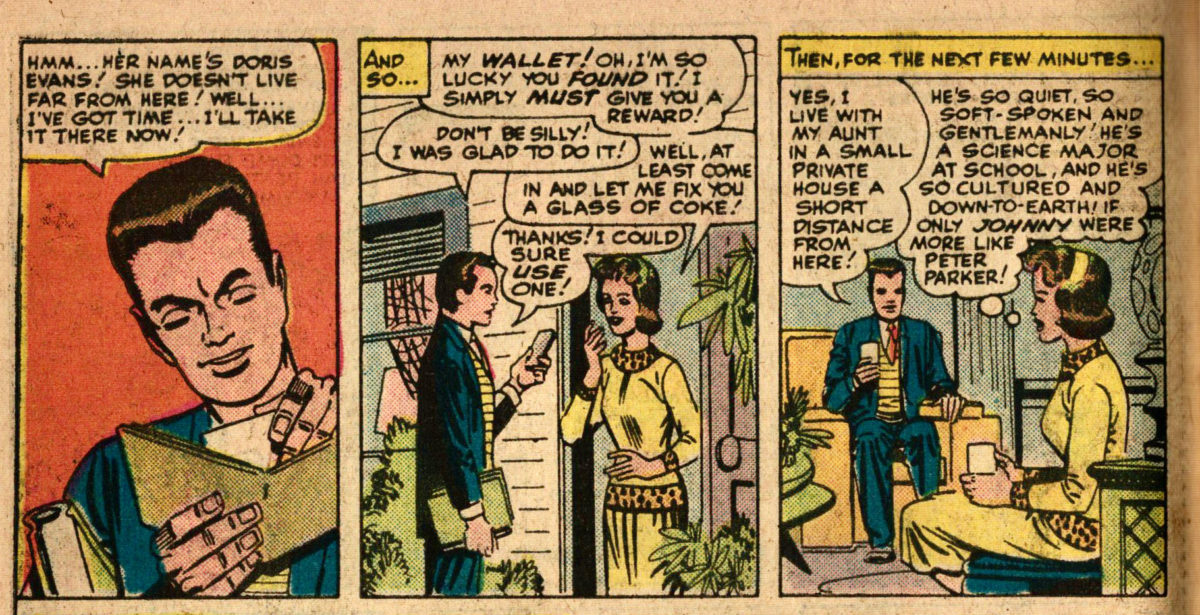Featuring: Spider-Man
Release: February 11, 1965
Cover: May 1965
12 cents
Mighty script by: Stan Lee
Powerful art by: Steve Ditko
A lotta lettering by: S. Rosen
20 pages
| Previous | Next | |
|---|---|---|
| Tales of Suspense #65, Story B | Reading order | Strange Tales #132 |
| Amazing Spider-Man #23 | Amazing Spider-Man | Amazing Spider-Man #25 |
I declared last month’s cover the best we’ve yet seen. Two months earlier, I’d declared it that cover. I really don’t want to keep doing that, but man, look at that crazy cover. It brings to mind Ditko’s roots in weird horror tales, and captures some of the madness of his Dr. Strange work.
The comic more than lives up to the cover.
The opening splash is also excellent. It shows Spider-Man haunted by the same ghost images of his villains, but makes it clear that’s a psychiatrist’s office, and it’s Spidey in the chair. And from the look on the doctor’s face, not about to receive a favorable diagnosis regarding his mental stability.

Aunt May is still struggling with the bills, and Peter plans to make more money taking pictures of Spider-Man to help out. Remember the theme of responsibility. Most often, it’s assumed his responsibility is to do good as Spider-Man, but he also has a responsibility to his aunt.
Continue reading “Amazing Spider-Man #24”











































